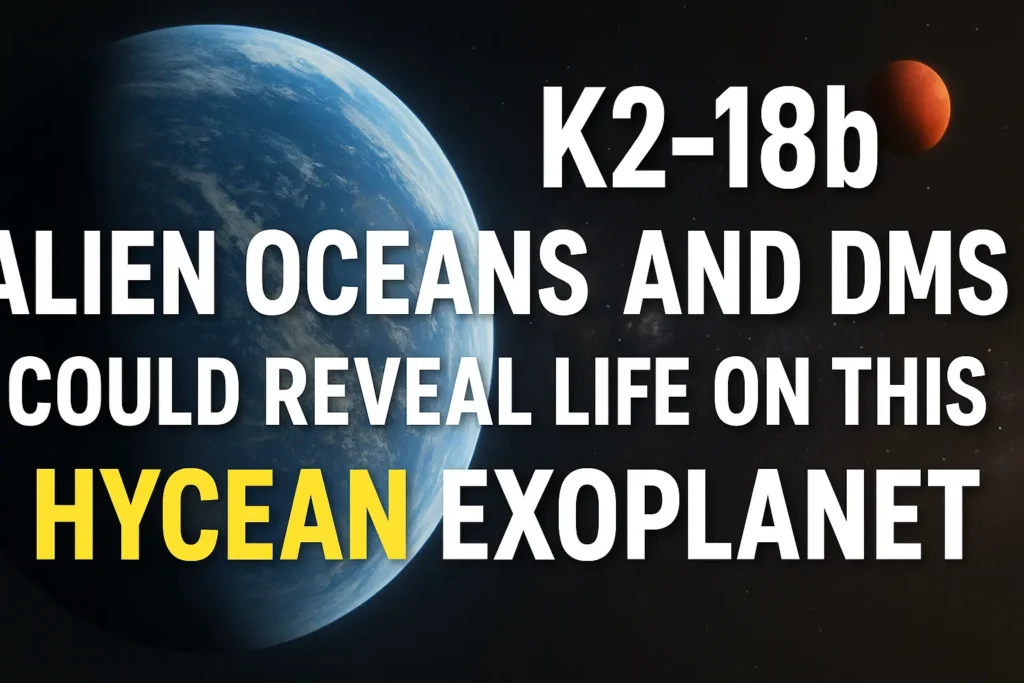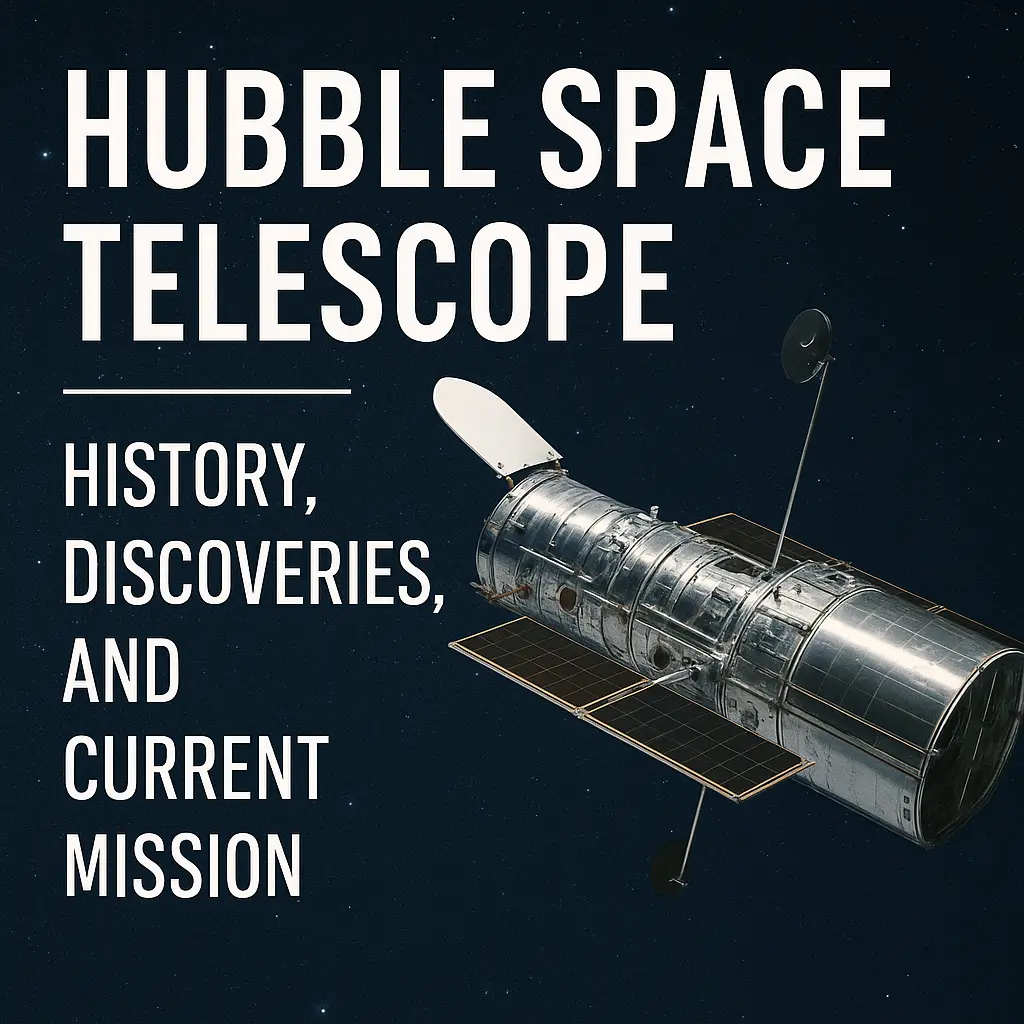The discovery and study of exoplanets like K2‑18b have revolutionized our understanding of where life might exist beyond Earth. Among the most promising candidates are Hycean worlds—planets with hydrogen-rich atmospheres and potentially water-covered surfaces. The James Webb Space Telescope (JWST) has provided tantalizing evidence of molecules like methane (CH₄), carbon dioxide (CO₂), and possibly dimethyl sulfide (DMS) in the atmosphere of K2‑18b. This raises exciting questions about its habitability and the search for extraterrestrial life.
In this article, we explore:
- K2‑18b’s properties and its place among temperate sub-Neptunes.
- Challenges to the habitability of Hycean planets.
- The role of DMS as a biosignature.
- The broader implications for exoplanet habitability research.
K2‑18b: A Hycean Candidate
- Distance: ~124 light-years in the constellation Leo.
- Mass & Radius: ~8.6 Earth masses and 2.6 Earth radii.
- Orbital Zone: Within the habitable zone of its red dwarf star.
K2‑18b has drawn intense interest because it is a sub‑Neptune within the temperate range of its host star, making it a prime candidate for a Hycean world—an exoplanet potentially featuring a deep ocean beneath a hydrogen-rich atmosphere. JWST’s spectral observations suggest the presence of methane and carbon dioxide, supporting the possibility of a water-rich or ocean-bearing environment.
Comparisons with Other Temperate Sub‑Neptunes
While many temperate sub‑Neptunes exist, few combine all the favorable conditions of K2‑18b:
| Planet | Radius (R⊕) | Mass (M⊕) | Atmosphere Type | Habitability Potential |
|---|---|---|---|---|
| K2‑18b | 2.6 | 8.6 | H₂‑rich w/ CH₄, CO₂ | Moderate |
| TOI‑1231b | 3.6 | 15 | Likely H/He | Low |
| LHS 1140b | 1.7 | 6.6 | Possibly thin H₂ | Moderate/High |
K2‑18b stands out due to its atmospheric detections, making it a frontrunner for Hycean habitability studies.
Challenges for Hycean Habitability
Recent studies have cast doubt on the habitability of Hycean planets:
- Runaway Greenhouse Effect:
- Thick hydrogen atmospheres (10–20 bar) can trap heat, potentially boiling away oceans.
- Tidal Heating:
- Planets with eccentric orbits experience internal heating, further destabilizing surface conditions.
- Photochemical Hazards:
- Strong UV irradiation from red dwarf stars could alter atmospheric chemistry, destroying biosignatures.
According to recent climate and tidal models, K2‑18b may lie near the inner edge of the Hycean habitable zone, where runaway greenhouse conditions could be triggered.
Explore the Secrets of the Universe with CuriosityStream. A huge selection and production of Documentaries, Series and Interviews will sparkle your curiosity about Space. Learn more here!
Dimethyl Sulfide (DMS) as a Biosignature
DMS (dimethyl sulfide, CH₃)₂S) is a volatile organosulfur compound that plays a major role in Earth’s atmospheric chemistry and serves as a potential biosignature for life detection on exoplanets.
Formation of DMS
On Earth:
- Phytoplankton produce dimethylsulfoniopropionate (DMSP) as an osmoprotectant.
- Marine bacteria enzymatically convert DMSP to DMS.
- DMS is released into the ocean and then the atmosphere.
Why DMS Matters for Astrobiology
- Primarily Biogenic: >90% of Earth’s DMS comes from biological activity.
- Atmospheric Persistence: DMS can be stable long enough to be detected, especially in hydrogen-rich atmospheres.
- Spectral Signature: Detectable in the mid‑infrared (~3.3 μm, 6–10 μm).
Tentative detections of DMS in K2‑18b’s atmosphere by JWST, if confirmed, could suggest marine microbial life—especially when found alongside CH₄ and low CO levels.
Current Evidence and Future Observations
- JWST has detected CH₄ and CO₂, with tentative signs of DMS.
- Alternative Mini‑Neptune Models can explain the observations without oceans or life by invoking high-metallicity atmospheres.
- Future Spectroscopy (longer observation times and additional wavelength coverage) will help distinguish between abiotic and biotic sources.
Next Steps
- Repeat JWST Observations at multiple wavelengths.
- Measure Orbital Eccentricity to model tidal heating more accurately.
- Search for Additional Biosignatures like methyl halides or N₂O.
Conclusion
K2‑18b remains a compelling candidate for further study as a Hycean world. Dimethyl sulfide (DMS) offers one of the most promising avenues for detecting extraterrestrial microbial life. However, new climate models suggest that many Hycean exoplanets may face severe habitability challenges due to runaway greenhouse effects and tidal heating.
As JWST and future missions continue to refine our measurements, the presence—or absence—of DMS in K2‑18b’s atmosphere could become a pivotal marker in humanity’s search for life beyond Earth.



